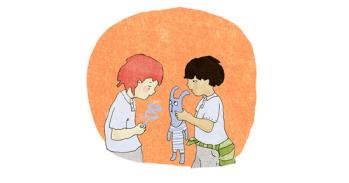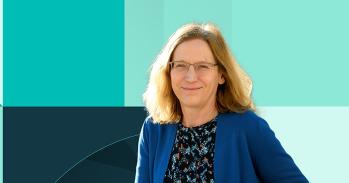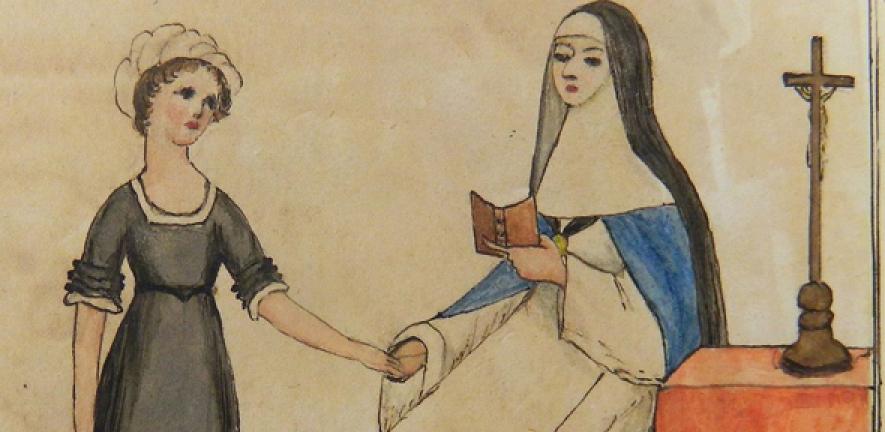
Bonfire night marks a plot in 1605 to burn down the Houses of Parliament. It’s also a reminder of the ferocious divides that existed between Protestants and Roman Catholics. Historian Liesbeth Corens is researching the measures taken by English Catholics to educate their children in the 'true faith'.
Bonfire night marks a plot in 1605 to burn down the Houses of Parliament. It’s also a reminder of the ferocious divides that existed between Protestants and Roman Catholics. Historian Liesbeth Corens is researching the measures taken by English Catholics to educate their children in the 'true faith'.
Education has long been a battleground between faiths with different beliefs and conflicting allegiances. Seldom has this been more striking than in 17th century England.
Liesbeth Corens
In 1698 a painter and his wife, William Seeks and Mary Brittell, appeared in court in central London. The crime for which they stood before the Middlesex Sessions in the borough of Clerkenwell was to have sent their nine-year-old daughter out of the country to be educated in a convent in France.
As Roman Catholics living in staunchly Protestant England, Seeks and Brittell were not able to have their children taught according to the tenets of their faith, which was held to be idolatrous in its teaching and treasonous in its allegiance to Rome. Thus they made what must have been complicated and costly arrangements for their daughter to travel to Paris – a journey not without hazards.
As part of a wider study of English travel, pilgrimage and exile, Liesbeth Corens, a PhD candidate in the Faculty of History, has been looking at the ways in which Catholic families made use of religious houses in continental Europe, chiefly France and the Low Countries, in order to instil Catholic devotion in their children as a foundation for their lives as upholders of the ‘true faith’.
“Education has long been a battleground between faiths with different beliefs and conflicting allegiances. Seldom has this been more striking than in 17th century England. Society was riven with religious divides as the fiercely Protestant Government sought to repress the vestiges of Catholicism while, for their part, Catholics were equally determined to educate the next generation to pass on their beliefs,” said Corens.
“There’s been considerable research into the role of religious orders in preparing English Catholics for life as permanent members of seminaries and convents – but much less research into English families’ use of the schools run by religious orders in continental Europe. These schools offered places for children who would spend several years being instructed in both the tenets of their confession and the skills of participating in worldly society, before returning to England to start their own families.”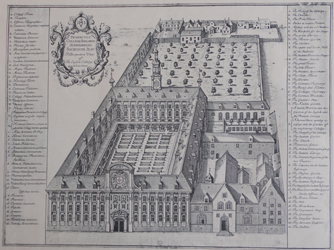
England broke with Rome in the mid-16th century when Henry VIII sought an annulment of his marriage to Catherine of Aragon. Many families, however, refused to comply with laws making Henry “Supreme Head on earth of the Church of England” and retained their allegiance to the Pope.
In the ‘Gunpowder Plot’ of 1605 Guido Fawkes famously conspired to put a bloody end to Protestant government. The plot was quashed, and Fawkes and his compatriots hung, but Catholic families continued to observe their faith. Operating clandestinely, they housed priests and smuggled in books and rosaries.
Seventy years later, the Popish Plot (1678) saw the country once again gripped by a surge of anti-Catholic feeling, leading to the execution of at least 22 Catholics. Titus Oates, who had studied at the Jesuit College in St Omer in France, claimed that the Jesuits were plotting to kill Charles II and return England to Catholicism. In the months that followed these (false) accusations, the government reissued acts against educating children in the Catholic faith and stepped up its watch on Catholics’ movements within the country and across the Channel.
Plans floated in Parliament included a proposal to remove children from Catholic families and place them with Protestant relatives. Proclamations were issued to prevent children being sent overseas. The Middlesex Sessions court records for 1698 state that Seeks and Brittell had acted unlawfully in sending their daughter “beyond the seas out of the obedience of his Majesty… on purpose to have the said Child remain and be trained up in a Nunery and strengthened in the popish Religion”.
Corens’ investigation of the private archives of a number of Catholic families, in parallel with research carried out in the archives of religious orders has enabled her to build a picture of the ways in which English Catholics, in the context of ferocious opposition and danger to their lives, raised their children to pass their faith on to future generations.
It’s impossible to know how many Catholic children were sent overseas to be educated. Institutional provision for English Catholic education in northern Europe started in the late 16th century and the schools remained active until the 18th century. Over two centuries, these schools educated large numbers of children. They ranged widely in size: the biggest college, at St Omer, had about 180 students on their roll at any one time, while the smallest institutions took around a dozen pupils.
The education that Catholic children received in convents and colleges overseas was largely in line with the education their Protestant peers received in grammar schools. In both schools, the focus was on Latin and the classics. However, there was one big difference: Catholic children did their learning in the context of a fully functioning religious community, observing and absorbing religious practices that had been outlawed in England.
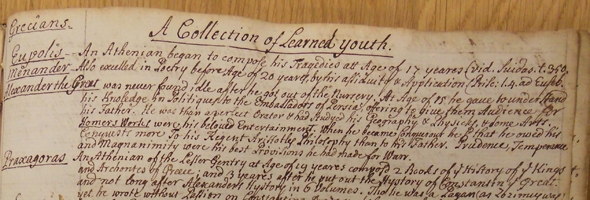
“The sheer force of feeling about religious matters shouldn’t be understated: to practise Catholicism was an act of subversion, albeit one carried, in many cases, from a position of privilege, and within the bounds of polite society,” said Corens.
“The language of militancy permeated education in the schools run by religious orders. Children were expected to learn their catechism with precision and be able to instruct others whenever an opportunity occurred. On leaving school, it was expected that children would take up the battle for the Catholic church as soldiers of Christ. At the Jesuit College of St Omer, the book recording prizes refers to students as milites – soldiers.”
Catholic parents were acutely aware of their duty to provide the best possible religious education for their children whose contribution to the English mission was seen to be as vital as that made by priests. Corens’ research reveals the careful planning that went into the education of children from middle and upper class homes. She said: “In their early years, children were seen as vulnerable – and this vulnerability, while putting them in danger, also provided an opportunity.”
A formative spell in a seminary or convent was only part of the plan. The next step was for many young people to undertake the Grand Tour in the company of a tutor who would be chosen by, or certainly approved by, the religious house. Travel to the classical sites of Europe – and exposure to cultured society in its capital cities - would prepare young Roman Catholics to return to England to take up life as ladies and gentlemen in the ‘better’ ranks of society.
The handwritten notes of one tutor – a Benedictine priest called W Champney – have survived in the archives of Douai Abbey. Describing Champney’s travels between 1706 and 1712, they offer a rare insight into the ambitious programme young travellers went through as they absorbed the classics, learnt to identify the exemplary young men of the past, took part in processions, visited pilgrimage sites and attended mass.
Records show that huge care was taken in the selection of tutors. Planning to send his son abroad for education in 1699, Robert  Throckmorton asked the abbot of the English Benedictines in Dieulouard, north-east France, to propose suitable candidates. The abbot came up with three candidates. Mr Scudamore had “good sense” and was “ingenious”; Mr Rigmade was “an extraordinary good Religious man, very mortifiyed and retired”; Doctor Moore was a “man more dignified”.
Throckmorton asked the abbot of the English Benedictines in Dieulouard, north-east France, to propose suitable candidates. The abbot came up with three candidates. Mr Scudamore had “good sense” and was “ingenious”; Mr Rigmade was “an extraordinary good Religious man, very mortifiyed and retired”; Doctor Moore was a “man more dignified”.
The best known Catholic travel tutor was Richard Lassels. A prolific writer and scholar as well as priest, he had a reputation as an educator of gentlemen and tutor of “persons of distinction” and was the first to use the term Grand Tour. Lassels’ travel guide The Voyage of Italy, published in 1670, was the outcome of five years of journeys and pilgrimages and, as such, it poses a challenge to the notion that the Grand Tour was broadly secular.
Travel was an essential ingredient of a rounded education. In the late 17th century the Lancashire landowner William Blundell had given his grandsons Edmund and Richard Butler a basic education in English, French and Latin. Though impressed with the boys’ progress, Blundell felt that he had reached the limit of what was possible in the “obscurest part of the nation” which lay “out of the Rode of Intelligence”. He was especially concerned about Edmund: “both his garb & his language are very much impaired by playing with the rude boyes of our neighbourhood”.
To remedy the situation, Blundell was prepared to make the considerable financial sacrifice needed to send Edmund to the Jesuit College in St Omer (“which speaks the best language in France without comparison”) and later to Blois or Paris to learn “dancing, fenceing and horsemanship” – skills that would equip him to be a gentleman ready to manage the family estates.
Girls were an important part of the strategy to carry the family faith forward. Blundell had earlier sent his daughter Jane overseas to be educated. On her travels, she has endured many storms and difficulties. Blundell explained away these hardships as character-building. In a letter to Jane, he wrote that she had “arryved with more merit (by reason of more trouble) then if an Angel had taken you up lyke Abacuce [Habakkuk, biblical prophet] & dropt you before the Grate of the Convent”.
Correspondence of another Catholic landowner, Marmaduke Constable, reveals a belief that an overseas education was both a safe haven, away from Protestant influence, and a seedbed. Parents should bide their time in being reunited with their sons and daughter. During extensive travels in Europe in the mid-18th century, Constable visited the children of Carnaby Haggerston. Constable recommended that Haggerston should not yet recall his son: “If you send for him now, you will ruin him for ever.” Haggerston, wrote Constable, should imagine his son “as if he had been asleep ever since he came… and that if was just now time to waken him, which if you do in the right way, I am sure you will see him come home to your pleasure and satisfaction.”
Subversive though their confessional adherence may have been, Catholics did not cut themselves off from their largely Protestant 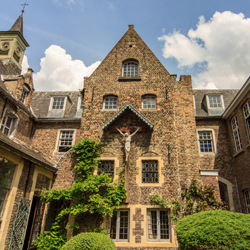 neighbourhoods. Constable, Blundell, Throckmorton and other Catholic landowners were players on the local political scene, and were expected to use their position to support less wealthy Catholics in their households and on their lands. Simultaneously, they cultivated bonds with their Protestant peers out of a positive commitment to civility and neighbourliness, using the skills acquired abroad to excel in sociability.
neighbourhoods. Constable, Blundell, Throckmorton and other Catholic landowners were players on the local political scene, and were expected to use their position to support less wealthy Catholics in their households and on their lands. Simultaneously, they cultivated bonds with their Protestant peers out of a positive commitment to civility and neighbourliness, using the skills acquired abroad to excel in sociability.
Nevertheless, the dangers of educating children in a faith that had been banned – and was deemed superstitious and idolatrous - were very real. In the 1670s, two young brothers called Francis and Michael Trappes, pupils at the English College in Douai, northern France, sent medallions to their siblings back at home in England but refrained from enclosing the rosaries they wanted to share with them because they thought “perhappes they would be troublesome for the bearer”.
Corens said: “What emerges in my research is how the transition from violent confrontation between Catholics and Protestants to peaceful toleration was much bumpier, and more nuanced, than conventional narratives suggest. In their determination to practise their faith, Catholics were stubbornly subversive in breaking out of an insular situation to interact with the rest of Europe. Their networks and connections were dynamic in a way that we consider to be much more modern.”
Liesbeth Corens is a Junior Research Fellow at Jesus College.
Inset images: prospectus for the English Jesuit College for boys in St Omer (Stonyhurst College); notes for young travellers written by a Benedictine tutor in the 1700s (Douai Abbey); corridor and exterior of the English convent in Bruges (Sister Mary Aline)
The text in this work is licensed under a Creative Commons Licence. If you use this content on your site please link back to this page. For image rights, please see the credits associated with each individual image.


